Best Resources to Implement Attention Mechanisms in TensorFlow to Buy in December 2025

Learning TensorFlow: A Guide to Building Deep Learning Systems


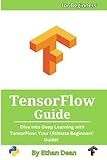
TensorFlow Guide: Dive into Deep Learning with TensorFlow: Your Ultimate Beginners' Guide!


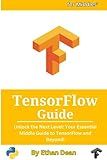
TensorFlow Guide: Unlock the Next Level: Your Essential Middle Guide to TensorFlow and Beyond!


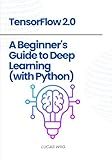
TensorFlow 2.0: A Beginner's Guide to Deep Learning (with Python)


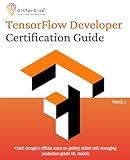
TensorFlow Developer Certification Guide: Crack Google’s official exam on getting skilled with managing production-grade ML models


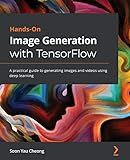
Hands-On Image Generation with TensorFlow: A practical guide to generating images and videos using deep learning



Hands-On Machine Learning with Scikit-Learn, Keras, and TensorFlow: Concepts, Tools, and Techniques to Build Intelligent Systems


Attention mechanisms are a popular technique used in deep learning models to improve performance in tasks involving sequential data, such as natural language processing and machine translation. TensorFlow provides a flexible framework for implementing attention mechanisms.
To implement attention mechanisms in TensorFlow, you can follow these general steps:
- Define the input and target sequences: Start by representing your input and target sequences as tensors. These sequences can be represented as numerical vectors or embedding matrices, depending on the nature of your data.
- Define the encoder: The encoder processes the input sequence and produces a set of hidden representations. This can be done using recurrent neural networks (RNNs) like LSTM or GRU. Alternatively, you can use pre-trained models like BERT or GPT as your encoder.
- Define the attention mechanism: Attention mechanisms allow the model to attend to different parts of the input sequences during the decoding process. The attention mechanism calculates attention weights based on the encoder's hidden representations and the current state of the decoder. There are different types of attention mechanisms, such as additive attention, dot-product attention, and self-attention (e.g., Transformer models).
- Implement the decoder: The decoder takes the attention weights and the encoder's hidden representations as input and generates the output sequence. You can use another RNN (LSTM or GRU) as the decoder, or implement a transformer-based decoder.
- Define the loss function: In supervised learning tasks, you need to define a loss function that measures the difference between the predicted output sequence and the target sequence. Common loss functions include categorical cross-entropy or sequence-to-sequence loss.
- Train the model: Use TensorFlow's optimizer functions (e.g., Adam or SGD) to minimize the loss and update the model's parameters. You can train the model in mini-batches, feeding the input and target sequences to the model iteratively.
- Evaluate the model: Once the model is trained, you can evaluate its performance using evaluation metrics suitable for your task. For example, in machine translation, you can use BLEU score or METEOR score to measure translation quality.
Remember that this is a general outline, and attention mechanisms can be implemented in various ways depending on the specific architecture and task. TensorFlow's flexibility allows you to customize the attention mechanism and integrate it seamlessly into your deep learning models.
How to improve the performance of attention mechanisms in TensorFlow?
There are several approaches you can try to improve the performance of attention mechanisms in TensorFlow:
- Increase the size of the model: You can try increasing the number of parameters and layers in your attention mechanism model. This can help the model to learn more complex patterns and potentially improve its performance.
- Use a different attention mechanism variant: There are several variants of attention mechanisms, such as self-attention, scaled-dot product attention, and masked attention. Experiment with different variants to find the one that works best for your task.
- Use attention with different input representations: Attention can be applied to different input representations, such as images, text, or audio. Experiment with different input representations to see if they improve the performance of your attention mechanism.
- Pretrain your model: Pretraining your model on a large dataset can help it to learn better representations before fine-tuning with your specific task. This can lead to improved performance of your attention mechanism.
- Regularize your model: Regularization techniques such as dropout or L1/L2 regularization can help to prevent overfitting and improve the performance of your attention mechanism.
- Optimize hyperparameters: Experiment with different hyperparameters, such as learning rate, batch size, or optimizer choice, to find the best combination for your attention mechanism model.
- Use attention in an ensemble: Combining multiple attention mechanisms or using attention in an ensemble of models can help to improve performance. This allows the models to learn from different perspectives and potentially capture more diverse patterns.
- Use a larger dataset: Increasing the size of your training dataset can help your attention mechanism model to learn more varied patterns. Consider acquiring more data or using techniques like data augmentation to generate additional training samples.
- Use transfer learning: Transfer learning involves using a pretrained model as a starting point for your attention mechanism model. By leveraging knowledge from a model trained on a related task or dataset, you can improve the performance of your attention mechanism.
- Experiment with different architectures: Attention mechanisms can be combined with various neural network architectures, such as recurrent neural networks (RNNs) or transformers. Experiment with different architectures to find the one that best suits your task and improves performance.
How to incorporate attention mechanisms in a CNN architecture using TensorFlow?
To incorporate attention mechanisms in a Convolutional Neural Network (CNN) architecture using TensorFlow, you can follow these steps:
- Import the required libraries:
import tensorflow as tf from tensorflow.keras.layers import Conv2D, Dense, MaxPooling2D, Flatten
- Define the CNN architecture without attention:
input_shape = (32, 32, 3) # Input shape of your data
Define your CNN architecture
model = tf.keras.Sequential([ Conv2D(16, (3, 3), activation='relu', input_shape=input_shape), MaxPooling2D((2, 2)), Conv2D(32, (3, 3), activation='relu'), MaxPooling2D((2, 2)), Conv2D(64, (3, 3), activation='relu'), Flatten(), Dense(64, activation='relu'), Dense(10, activation='softmax') ])
- Define the attention mechanism function:
def attention_block(inputs): attention = tf.keras.layers.Dense(1, activation='tanh')(inputs) attention = tf.keras.layers.Flatten()(attention) attention = tf.keras.layers.Activation('softmax')(attention) attention = tf.keras.layers.RepeatVector(64)(attention) attention = tf.keras.layers.Permute([2, 1])(attention) return tf.keras.layers.multiply([inputs, attention])
- Modify the CNN architecture to incorporate attention mechanism:
model = tf.keras.Sequential([ Conv2D(16, (3, 3), activation='relu', input_shape=input_shape), MaxPooling2D((2, 2)), Conv2D(32, (3, 3), activation='relu'), MaxPooling2D((2, 2)), Conv2D(64, (3, 3), activation='relu'), Flatten(), Dense(64, activation='relu'), attention_block, Dense(10, activation='softmax') ])
Here, we added the attention_block function after the Dense(64, activation='relu') layer to apply attention. The attention block takes the output of the previous layer and modifies it using the attention mechanism.
Now you can train your model and use attention mechanisms in your CNN architecture in TensorFlow.
How to visualize attention maps in TensorFlow?
To visualize attention maps in TensorFlow, you can follow these steps:
- Import the necessary libraries:
import matplotlib.pyplot as plt import numpy as np
- Retrieve the attention weights from the model:
attention_weights = model.get_attention_weights(inputs)
- Calculate the mean attention weights across all heads, if applicable (e.g., for Transformer models):
mean_attention_weights = np.mean(attention_weights, axis=1)
- Normalize the attention weights to be between 0 and 1:
normalized_attention_weights = (mean_attention_weights - np.min(mean_attention_weights)) / (np.max(mean_attention_weights) - np.min(mean_attention_weights) + 1e-8)
- Create a heatmap using matplotlib to visualize the attention weights:
plt.imshow(normalized_attention_weights, cmap='hot', interpolation='nearest') plt.colorbar() plt.show()
- Optionally, you can overlay the attention weights on the input sequence to get a better understanding of the attention distribution. For example, you can use matplotlib to plot a heatmap of the input sequence and overlay the attention weights as a separate "mask" on top of it:
plt.imshow(normalized_attention_weights, cmap='hot', alpha=0.6, interpolation='nearest') plt.imshow(inputs, cmap='gray', alpha=0.4) plt.colorbar() plt.show()
Remember to replace model and inputs with your own model and input data. Adjust the visualization settings as per your requirements.
How to implement self-attention in TensorFlow?
To implement self-attention in TensorFlow, you can follow these steps:
- Import the necessary libraries:
import tensorflow as tf from tensorflow import keras
- Define the SelfAttention layer as a subclass of keras.layers.Layer:
class SelfAttention(keras.layers.Layer): def __init__(self, attention_units): super(SelfAttention, self).__init__() self.attention_units = attention_units
def build(self, input\_shape):
self.Wq = self.add\_weight(shape=(input\_shape\[-1\], self.attention\_units),
initializer='glorot\_uniform', trainable=True)
self.Wk = self.add\_weight(shape=(input\_shape\[-1\], self.attention\_units),
initializer='glorot\_uniform', trainable=True)
self.Wv = self.add\_weight(shape=(input\_shape\[-1\], self.attention\_units),
initializer='glorot\_uniform', trainable=True)
def call(self, inputs):
q = tf.matmul(inputs, self.Wq)
k = tf.matmul(inputs, self.Wk)
v = tf.matmul(inputs, self.Wv)
d\_k = tf.cast(tf.shape(k)\[-1\], tf.float32)
scaled\_attention\_logits = tf.matmul(q, tf.transpose(k)) / tf.math.sqrt(d\_k)
attention\_weights = tf.nn.softmax(scaled\_attention\_logits, axis=-1)
output = tf.matmul(attention\_weights, v)
return output
- Use the SelfAttention layer as a part of your model:
inputs = keras.Input(shape=(sequence_length, embedding_dim)) x = SelfAttention(attention_units)(inputs)
Continue building the rest of the model
...
model = keras.Model(inputs=inputs, outputs=outputs)
Make sure to replace sequence_length, embedding_dim, and attention_units with the appropriate values for your use case.
That's it! You have now implemented self-attention in TensorFlow.
How to handle long input sequences with attention mechanisms in TensorFlow?
When dealing with long input sequences with attention mechanisms in TensorFlow, you can follow these strategies to effectively handle them:
- Truncated sequence: One approach is to truncate the input sequence into shorter subsequences. You can split the long sequence into smaller chunks of fixed length and process them independently. However, this may result in losing contextual information across the boundaries of truncated subsequences.
- Sliding window: Instead of truncating the sequence, you can use a sliding window approach. This means you move a window of fixed length across the sequence, processing it step by step. By overlapping consecutive windows, you ensure that the model can still capture contextual information across different windows.
- Hierarchical attention: If the long sequence can be structured hierarchically, you can employ hierarchical attention mechanisms. This involves using multi-level attentions, where the first level attends to different parts of the input sequence and the second level attends to the first-level outputs. This way, you can effectively handle longer sequences while capturing relevant hierarchical information.
- Transformers: Transformers, a popular attention-based architecture introduced in the "Attention is All You Need" paper, are designed to handle long sequences efficiently. Transformers utilize self-attention mechanisms that allow the model to attend to different positions in the sequence, thus alleviating the limitations of long-range dependencies. Implementing transformers in TensorFlow can be done using the Transformer module available in the TensorFlow library.
- Compression techniques: Various compression techniques, such as convolutional neural networks (CNNs) or recurrent neural networks (RNNs), can be applied to reduce the dimensionality of the input sequence while preserving essential information. These compressed representations can then be fed into the attention mechanisms for further processing.
Remember to consider the trade-off between long sequence handling and computational complexity when implementing these strategies, as excessively long sequences might significantly impact training and inference times.
